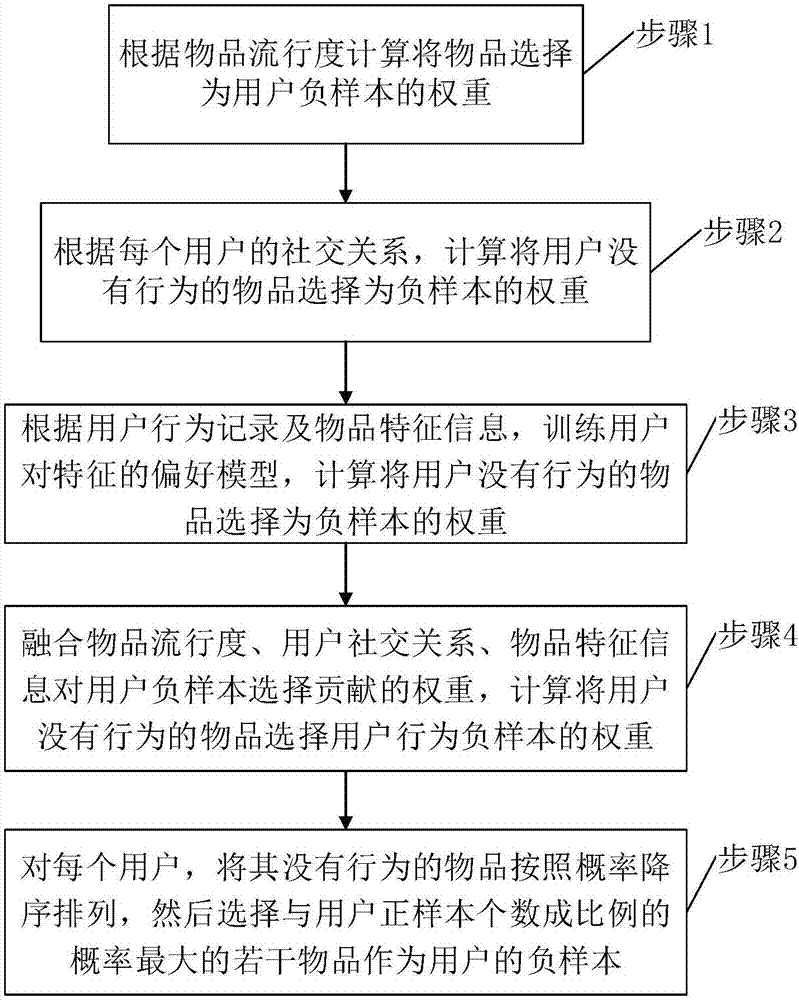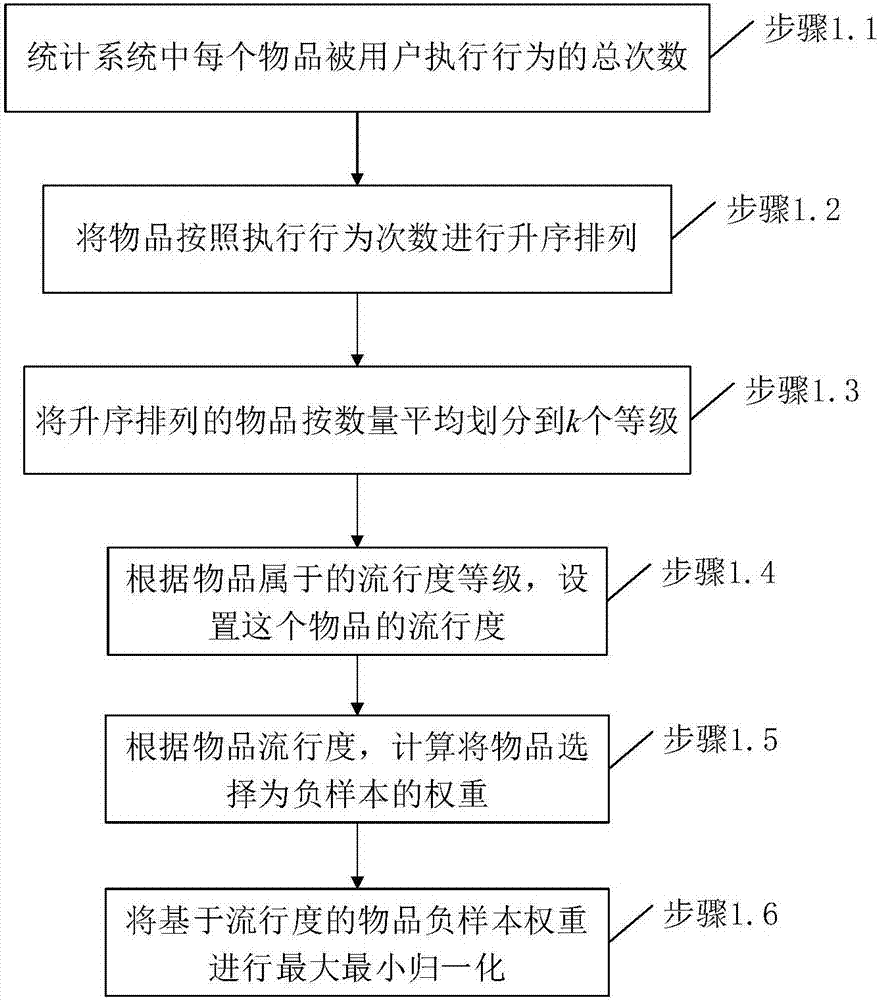Negative sample selection method against single-type collaborative filtering problems
A collaborative filtering and negative sample technology, applied in the field of Internet recommendation, can solve the problems of not considering the influence of the user's social relationship interests, not considering the user's interest characteristics, etc.
- Summary
- Abstract
- Description
- Claims
- Application Information
AI Technical Summary
Problems solved by technology
Method used
Image
Examples
Embodiment
[0063] Assume that a user set {a, b, c, d, e, f} consisting of 6 users acts on an item set {item1, item2,..., item10} consisting of 10 items. User behavior data records are shown in Table 1. The social relationship here is assumed to be a one-way follow relationship. For example, user a follows user b, then b is a friend of a, but a is not a friend of b. In this embodiment, the specific process of selecting negative samples for user a is introduced in detail. Figure 6 It is a schematic diagram of friends obtained according to the friends following relationship in this embodiment.
[0064] Table 1 User Behavior Data
[0065] user
Items with behavior
follow friends
a
item2, item3, item5
b,c,d
b
item1, item2, item7
a,d
c
item1, item2, item3, item4, item7
a
d
item1, item2, item5, item6
b
e
item1, item5, item7, item9
a,d,c
f
item4, item8, item10, item1
e
[0066] Step 1: ...
PUM
 Login to View More
Login to View More Abstract
Description
Claims
Application Information
 Login to View More
Login to View More - R&D
- Intellectual Property
- Life Sciences
- Materials
- Tech Scout
- Unparalleled Data Quality
- Higher Quality Content
- 60% Fewer Hallucinations
Browse by: Latest US Patents, China's latest patents, Technical Efficacy Thesaurus, Application Domain, Technology Topic, Popular Technical Reports.
© 2025 PatSnap. All rights reserved.Legal|Privacy policy|Modern Slavery Act Transparency Statement|Sitemap|About US| Contact US: help@patsnap.com



